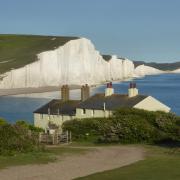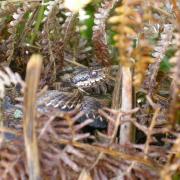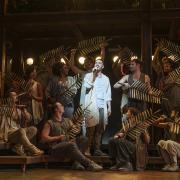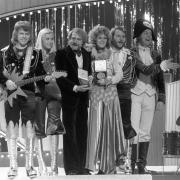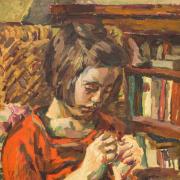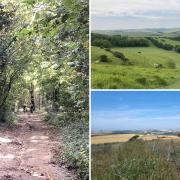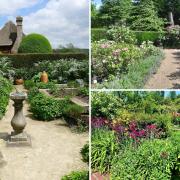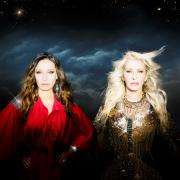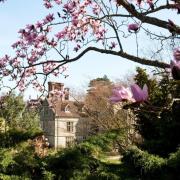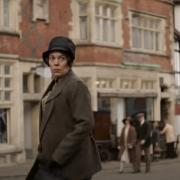Sussex has always been inextricably linked with riding to hounds. Now, as David Cameron says that he is “sympathetic” to farmers’ concerns over pest control, we find out how one of our local packs is faring, and take a look at their illustrious history.
Back in 1670 the picture perfect village of Charlton, nestled at the foot of the South Downs just a couple of miles from Goodwood House, became one of the nobility’s favourite places in England. From the reign of Charles II almost every aristocratic family in the land had an involvement with the Charlton Hunt, and that included almost half the Knights of the Garter.
Later, the first Duke of Richmond bought a simple, timber-framed lodge with the purpose of riding over the hill from what is now Goodwood House to join the hunt at Charlton.
Local enthusiasts still talk about the famous “Grand Chase” which dates back to the 1730s, when the second Duke, as Master of the Hounds, had kennels built in the main street of the village – later converted into cottages for the Estate. On one particular, now immortalised day, 26 January 1739, the hounds ran non-stop from 8am to 6pm, when it would have been dark. The Duke stayed the whole 57-mile course and the distance was checked by servants sent out with a cartwheel to retrace the course.
Those days may be over but the spirit of this ancient sport still very much lives on in the present-day hunt, which has its roots in Charlton but was amalgamated in 1973 to become the wider Chiddingfold, Leconfield and Cowdray Hunt.
Robin Muir, Master of Foxhounds, said: “Our heritage means a lot to us, and that’s why we work so hard to preserve the attention to detail and the traditions which have been handed down through centuries.”
The Charlton Hunt still exists as a dining club under the patronage of the Duke of Richmond, Viscount Cowdray and Lord Egremont. The tradition of the blue and gold livery continues and by permission of the Landmark Trust, an annual dinner is still held at Fox Hall in Charlton.
Back in 1790 the hounds were housed at a cost of £6,000 in the most magnificent quarters in England, at Goodwood. The present pack has equally impressive accommodation, courtesy of Lord Egremont.
“Our kennels remain some of the finest in the country,” said Robin. “They are in the stunning Petworth Park and the Egremont family have been incredibly supportive to the hunt. Hounds have been kennelled there since the 18th century. We have 60 couple based there, which amounts to 120 hounds. We usually take 15/20 couple out a time, depending on the type of day it is.”
Bearing in mind that fox-hunting is a sport which has attracted a fair amount of controversy over the last decade, there still seems to be a huge amount of enthusiasm when it comes to the sound of the horn and the thunder of hooves.
“Admittedly we are very lucky as Masters in that Sussex has always been a keen fox-hunting patch,” said Robin. “You find that land has been handed down through farming families who have grown up with the tradition and are keen to see it continue. However, with land being sold or divided off things have changed. There are more people who come down to the country only at weekends, for example, and it is our jobs as Masters to go out and nurture new relationships, as well as protect old ones.”
The large estates such as Cowdray, Petworth, Goodwood, Bignor Park, Barlavington and Arundel have always been firm supporters of the hunt.
“The families may not always hunt themselves, but are always very supportive. We still meet at the old Charlton kennels at Goodwood, now the Kennels Restaurant and Golf Club, and the family often come down to see hounds off,” said Robin.
“On the whole the response we’ve had continues to be very positive amongst new members and followers, and I think that’s due to the fact that when people move to the country or even buy a weekend place, they also want to buy into the life and the traditions that the countryside offers. We have always been one of them. We also work closely with the local shoots, as well as local farmers in maintaining ditches and picking up fallen stock. It is a joint working relationship,” said Robin.
And the hunt itself is very much a corporate entity, with a Board of Directors and sub-committees. Around fifty per cent of income is raised through fundraising events. George Grammer, Director of Fundraising, said: “We run a large variety of events during the year, ranging from hunt balls at venues such as Petworth House and Goodwood to horse trials, hog roasts, small country fairs and even something known as a Tumblers’ Evening when those who have become parted from their mount during the season can come and reminisce about their close shaves on the way down from the saddle to the ground!”
Much work also goes into the preservation of years of hunt tradition. “We are very proud of our ancient hunting roots,” said Robin. “And we are sticklers for etiquette such as well turned-out horses and riders. After all, we are custodians of something that goes back centuries. We don’t want to become a riding club.”
And what about the obvious omission of the fox? “I think it’s important to emphasise that the real thrill of the hunt has always been in the enjoyment of getting together with a bunch of people who enjoy a great day’s riding, the upkeep of ancient tradition and being alive at the end of it!” says Robin.
“We are aware that not all of our members want to jump fences, so you don’t have to. Having said that, if you do want to, some of the jumps are magnificent and our Huntsman knows the magic behind perfect scent trail laying. That is why his advice is sought by other hunts throughout the country,” said Robin.
The days of the sport only being the preserve of the landed gentry are also fast disappearing.
“While it is fair to say we work hard on preserving the tradition of historical hunting, we are by no means elitist,” said Robin, who is himself a photographic historian. “Our members come from every trade and profession, from air hostesses to plumbers. I can honestly say I’ve met more people and have more friends from all walks of life after I started hunting than I would have ever met otherwise.”
The Chiddingfold, Leconfield and Cowdray Hunt begins its season this month with its two opening meets, at Petworth Park and Cowdray House.
“Perhaps the best way I can sum it up is that thrill, that burst of nerves and that blend of horse and rider,” says Robin. “That feeling is the same now as it would have been back in Charlton in the 1600s, and that comes with the sound of the horn.”
For further information visit www.clandchunt.co.uk




